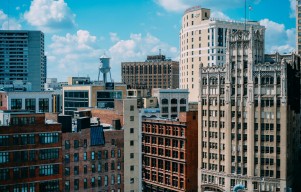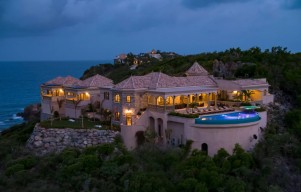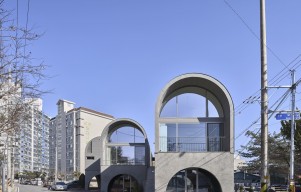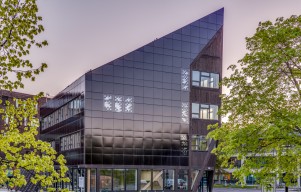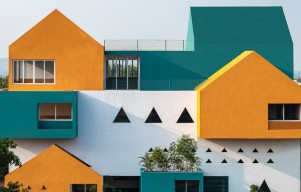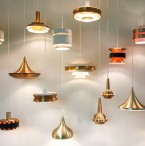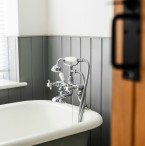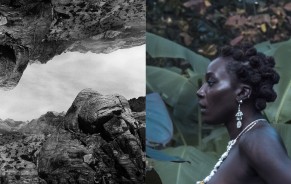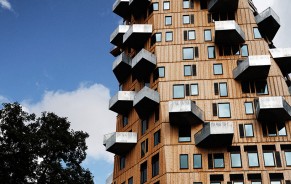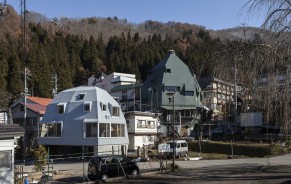Nestled in the center of the busy streets of Ho Chi Minh City, VINA, The Vibes building portrays design innovation and architectural sustainability. A low-rise multi-functional complex that Infinitive Architecture conceptualized became the subject of interest after its introduction into the market in August 2022. Vibes is a green and tranquil oasis in an urban area that smoothly combines bamboo screens, glass facades, and climbing plants to create a perfectly laid-out venue where people can have meals, work, and relax.
Design Philosophy
The essence of the design philosophy of The Vibes is based on the versatility of combining functionality and environmental friendliness. This project is a heroic attempt at bringing nature into the city without taking away a tremendous amount of space while still allowing the freedom to move around. Technology has no role in this, but the bio-climatic approach of the architects at Infinitive Architecture has made it possible to reimagine urban living and create a sanctuary amid the concrete jungle.
A Space for Every Purpose
Vibes is designed with three distinct areas that can be used for different objectives. The ground floor covered by zone 1 will be the front of the house, F&B (Food and Beverage) establishments, and the back of the house. This zone, Zone 1, runs from the front of Level 2, and the rear area of Level 2 is designed for meetings, workshops, and co-working space. Eventually, the Zonal organization encompasses a roof garden on the first half of Level 2 and a Heritage Gallery on Level 3, providing space for cultural, scientific, and creative activities.
The Vibes is a crucial feature of its transitioning space planning, as it shows the gradual change from an urban to a serene setting. The path from the gate to the garden court is deliberately extended so the visitor can feel the change in mood more strongly. As visitors wander through the garden, they are enveloped by the bamboo screen rustling smoothly and the birds' cheerful chirping, allowing for an in-depth appreciation of nature.
A determining factor in the design idea of The Vibes is the concept of transparency. Glass curtain walls, which are covered with bamboo sunshade screens at multiple layers, provide the space with abundant daylight but reserve privacy for the occupants. A complex merging of glass, bamboo, and plants climbing walls creates a vanishing zone where it is hard to define the core of the building.
Embracing Sustainability
Additionally, The Vibes emphasizes using environmentally friendly materials and building methods to further the sustainability of its initiatives. Bamboo - famous for its strength and renewability - is a significant constituent of the building, narrowly combined with aesthetics, serving as a structural element and decoration. Using harveled brick blocks and vegetables plant cover walls prioritize green material quality. Also, high-technology roofing systems for energy efficiency, comfort, and thermal comfort.
The Rooftop Garden
The upper green garden and the verdant roof at 'The Vibes' distract residents from the city's noise and share the Vietnamese culture. Level 3 is the location of the Heritance Gallery, which is full of historical artifacts and memorabilia from Saigon's rich past. Therefore, one is offered a chance to peek at what the city was in the past. In their design, the store's front doors are an integral component of the preservation of tradition - the remaining history of a long past time to be cherished for the future.
'The Vibes' is, in essence, the evolution of urban development, seeing landscape as fluid and redefining the role of buildings and environment. Such a multi-purpose edifice not only integrates nature with the existing built environment, but rather facilitates a more holistic experience that works on the wellbeing of the users' mind, body, and soul. Against the backdrop of cities worldwide struggling with the uncertainty of such rapid urbanization, The Vibes stands as a beam of hope, demonstrating that sustainable living is not only possible but is imperative for the health of future generations.
Related Article: Renzankyo Residential Complex Draws Design Inspiration From Traditional Japanese Tearooms and Gardens for Tranquil Living
